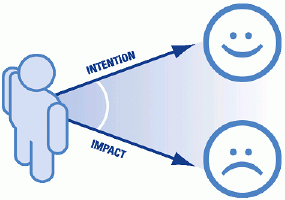November 15, 2017

Good Intentions Aren’t Enough: Choosing Wisely Misses the Target
Market Corner Commentary Special Report for November 8, 2017
Earlier this year, the Choosing Wisely campaign celebrated its 5th anniversary. Choosing Wisely is a well-funded, practice-focused organization created to reduce “wasteful or unnecessary medical tests, treatments and procedures.”
An October Health Affairs article, Choosing Wisely: How to Fulfill the Promise in the Next 5 Years by Eve Kerr, Jeffrey Kullgren and Sameer Saini, chronicles Choosing Wisely’s launch and progress to date
Unfortunately, the authors observe that “nationwide decreases in unnecessary care appear to be slow in coming.” Several studies have found either miniscule decreases or increases in targeted low-value services.
The conclusion is inescapable. Despite its heroic effort, Choosing Wisely has belly-flopped. It has not improved practice patterns. Americans routinely receive unnecessary medical treatments that cost hundreds of millions annually.
This result should surprise no one. Good intentions are not sufficiently powerful to overcome American healthcare’s structural flaws. Without major payment reform that rewards better outcomes and more efficient resource utilization, Choosing Wisely and other industry-led transformation initiatives will continue to under-perform.
 Abundant Activity; Limited Progress
Abundant Activity; Limited Progress
Amid much fanfare in April 2012, the ABIM Foundation and Consumer Reports launched the “Choosing Wisely” campaign to promote more effective use of healthcare resources. Specifically, Choosing Wisely partnered with over 80 medical societies (representing more than 1 million clinicians) to eliminate “low value” treatments that add cost without improving outcomes.
Five-plus years later, medical specialty societies have identified and published 525 unnecessary treatments. Choosing Wisely has undertaken a massive education program to change physician behaviors and inform consumers. They have partnered with over 70 consumer and employer groups to spread the word.
In its 5-year report, Choosing Wisely highlights the extensive outreach it’s taken to advance the national dialogue on appropriate care. Accomplishments include the following:
- Selecting 45 specialty physician champions to advocate for better treatment protocols
- Funding 29 grantees to conduct research on appropriate utilization
- Being referenced in 1330 medical journal articles during 2016
- Receiving almost 2 million visits to the Choosing Wisely website during 2016
The Health Affairs article applauds Choosing Wisely’s organizing efforts:
Many health care systems took up the charge to implement Choosing Wisely principles, and the ABIM Foundation began to coordinate regular teleconferences among a group of twenty-three health system leaders from across the country to discuss initiatives that they were leading to decrease overuse…
Even more impressive, some states created alliances to spread Choosing Wisely principles across health systems. To test new approaches to reducing unnecessary services, the Robert Wood Johnson Foundation funded intervention projects in six states, spanning fourteen health care systems… The campaign has also spread internationally, with organizations in at least seventeen countries developing or running Choosing Wisely–type campaigns.
The article’s authors express sympathy with Choosing Wisely but acknowledge the organization’s lack of progress in changing practice patterns. They conclude that the disappointing results were not surprising, noting the difficulty of not offering services considered “usual care” by both physicians and patients.
Consistent with this assessment, the authors recommend doubling-down on the program’s current strategies by doing more of the following: identifying high-priority clinical recommendations; designing innovative intervention methods; thoroughly evaluating effectiveness; and collaboratively disseminating successful approaches.
Implicit in their recommendations is the authors’ belief that more rigorous education and outreach will lead to meaningful improvement in medical practice patterns. In essence, they believe the medical profession can heal itself.

“Good Intentions” is Not a Strategy
In a Modern Healthcare article the lead author of the Health Affairs report, Dr. Eve Kerr from the University of Michigan, gave the following explanation for the healthcare system’s inability to eliminate wasteful medical treatments:
What we’ve learned is that it’s just really hard to change practice [patterns]. Medical professionals have been practicing one way for a long time and patients expect that kind of practice… That doesn’t happen in five years. Culture is one of the hardest things to change and it takes the longest.
Culture change is certainly hard and time consuming. But that’s an inadequate explaination for why, despite efforts like Choosing Wisely, the medical establishment still fails to provide the right care at the right time in the right place at the right price.
For a more materialist take on the underlying dynamics driving healthcare behavior, consider Joe Flower’s view. In his book Healthcare Beyond Reform, Flower identifies two core rules of healthcare economics:
- Rule 1: People do what you pay them to do; and
- Rule 2: People do exactly what you pay them to do.
Flower’s assessment is harsh but directionally right.
In American healthcare, value follows payment. Physicians won’t provide appropriate care until we pay them to do exactly that.
In other industries, payment follows value. Companies offer high-value products and services, such as Apple’s iPhone and airlines seats with extra legroom, for which customers willingly pay.
In healthcare, fee-for-service (FFS) reimbursement pays for treatment activities with minimal regard for treatment outcomes. The not-surprising result is that the system tolerates unacceptable levels of unnecessary, wasteful and counter-productive care.
While fee-for-service payment predominates, we should not delude ourselves into believing that well-intentioned programs, like Choosing Wisely, will eliminate inappropriate but profitable medical practices. They will have their successes, but the pernicious effect of FFS-incented physician behaviors will overwhelm voluntary reform efforts.
Good intentions are not sufficient to induce health system transformation. Value-based care will emerge to the extent the system pays for value.

Accountable Care Organizations (ACOs) Also Under-Performing
The Centers for Medicare and Medicaid Services (CMS) is also struggling to reduce wasteful medical treatments through voluntary initiatives. On October 31st, Modern Healthcare reported that CMS’s shared-savings program for Medicare paid out more bonuses to ACOs ($691 million) than it generated in program savings ($652 million) through more appropriate utilization.
ACOs are risk averse. CMS’s net loss results because 95% of Medicare ACOs (410 out of 432) participate in the “Track 1” programs where they accept no “downside” risk; i.e., penalties for not meeting savings targets.
Only 22 ACOs currently engage in Tracks 2 and 3 two-sided risk-based contracting. These ACOs believe they have the organizational capabilities to change care delivery patterns. Their financial upside is greater because they are willing to pay penalties if they under-perform.
CMS has engaged actively in value-based pricing initiatives through its Center for Medicare and Medicaid Innovation (CMMI) since the passage of the 2010 Affordable Care Act. Despite massive investment by CMS and providers in value-based care, Medicare savings under the CMMI’s new payment programs have been miniscule – just slightly more than 1% after 5-plus years of effort.
On October 4th, the National Association of ACOs (NAACOs) and Leavitt Partners published their first annual survey of ACO executives. 240 unique Medicare, Medicaid and commercial ACOs participated in the survey. ACOs provide coverage for more than 32 million Americans.
Consistent with the CMS experience, the survey authors report that ACOs will only participate in downside risk-based contracts “when they have the ability and infrastructure in place to take on and manage that risk.”
Like Dr. Kerr discussing Choosing Wisely sub-par outcomes, Clif Gaus (NAACOS’ President and CEO) preached patience, collaboration and “staying the course” in assessing ACOs under-performance in delivering value-based care,
Everyone wants value-based care, but in order to do that we need to support, learn, and continuously improve. We’re all learning. Let’s do that together.
Human nature being what it is, healthcare transformation will occur much faster only when there are significant positive and negative incentives for changing practice patterns.

Real Healthcare Transformation
In I, Candidate for Governor: And How I Got Licked, muckraking journalist Upton Sinclair chronicles his rollicking, turbulent 1934 campaign for Governor of California as a populist Democrat. He almost won on his EPIC (End Poverty in California) platform. Sinclair’s book contains the following quotation for the ages,
It is difficult to get a man to understand something, when his salary depends on his not understanding it.
Sinclair’s logic is undeniable and applicable to U.S. healthcare. We can and should applaud the efforts of Choosing Wisely and like-minded efforts to reform the system from within. They create needed urgency for change.
Real change, however, will not occur until industry incumbents feel market pressure from new business models delivering the high-quality, low-cost convenient care that the American people want and deserve. Demand-driven change generates super-hero results.
The airline industry didn’t transform until Southwest Airlines demonstrated they could scale their superior business model. The retailing industry didn’t change until Walmart demonstrated that big-box stores could offer greater selection, convenience and value. The auto industry didn’t change until Japanese carmakers demonstrated they could sell high-quality vehicles at affordable prices.
Once unleashed, American consumers are value-seeking machines who reward companies that offer great products and services with increased market-share. Upstart companies salivate at healthcare’s inherent fragmentation and inefficiencies. They see opportunities for innovation and growth. They know they can do better.
When the dust settles, winning health companies will transform American healthcare from the ground up because they understand the following truths: outcomes matter; customers count and value rules.





